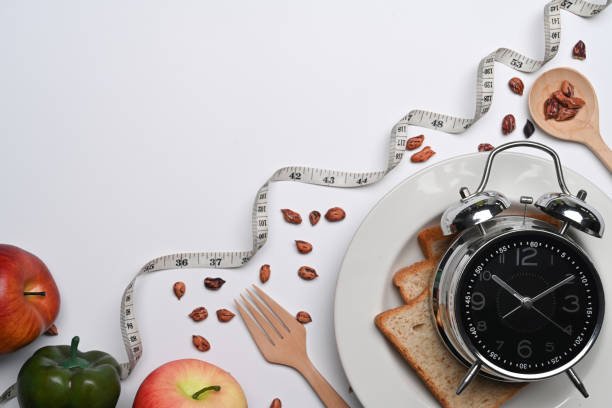
7 Intermittent Fasting Schedules to Revitalize Your Weekly Routine
Intermittent fasting schedule is what it is? Let’s face it, we’ve all hit that mid-week slump where the thought of another predictable meal feels as exciting as watching paint dry. You know what I’m talking about – that daily dance with monotony that messes with not just your taste buds but also, dare I say, your vitality. Enter the world of intermittent fasting, a flamenco dancer in the ballroom of dietary routines, promising to add a zesty twist to your blah routine and possibly your health. Now, there isn’t just one way to twirl through your eating schedule; there are, ladies, at least seven! Some call it a diet, others a lifestyle, and then there are folks who treat it like a health revolution. Hear me out, maybe it’s a bit of all three.
With choices ranging from the popular 16/8 method to the beginner-friendly 14/10, not to forget the bold Eat-Stop-Eat, picking the perfect rhythm can feel overwhelming. But don’t fret; we’re about to slice this into digestible, bite-sized chunks so you can find your fasting groove with ease. After all, who doesn’t love having options? Especially when it comes to rejuvenating not just your diet, but your entire week, making room for more of that precious ‘me-time’.
So grab a cup of your favorite tea, and let’s embark on this journey together – because exploring intermittent fasting schedules is like opening up a secret menu to life, where surprise benefits await!
Understanding Intermittent Fasting
Embarking on a journey through intermittent fasting is like unlocking a hidden door to better health—provided you have the right key. It’s far from being a modern trend; fasting was practised by ancient civilizations for varied reasons, with health at the forefront. What makes it intriguing today is the science that unravels how timed abstinence from food aids our bodies. It turns out, fasting periods give our cells time to repair and remove waste—imagine a ‘system reboot’ for your metabolism. This cleansing phase, known as autophagy, is like maintenance for a car; it’s essential for peak performance. Furthermore, fasting has been linked with improved blood sugar control, decreased inflammation, and potential longevity benefits. It’s not just about delaying your breakfast or skipping an occasional meal. It’s strategically harnessing our body’s innate capabilities to rejuvenate, leading to sustained energy and improved overall well-being. As you read on, you’ll discover various intermittent fasting schedules in sections like The 16/8 Method and The 5:2 Diet, each designed to fit different lifestyles and goals.
The 16/8 Method

Jumping into the world of intermittent fasting might seem daunting, but the 16/8 Method is a great starting point. A favorite among beginners and seasoned fasters alike, this schedule entails a daily cycle where you fast for 16 hours and limit your food intake to the remaining 8 hours. Imagine skipping breakfast, having lunch at noon, and wrapping up dinner by 8 PM. It’s pretty much as simple as that.
Why the buzz around it, you ask? The 16/8 Method is flexible enough to fit into most lifestyles and seems less intimidating than more extreme fasting protocols. There’s a promising buffet of potential benefits too, like improved insulin sensitivity, weight loss, and enhanced brain function. Just remember, while it’s easy to get caught up in the fasting frenzy, it’s crucial to fuel those 8 hours with nutritious meals – so you’re not undermining your health goals. Eating like a king at a feast, then famine for the rest of the day isn’t quite the ticket. And if you find this method a bit too demanding, you might want to ease into intermittent fasting with the 14/10 Method for Beginners.
The 5:2 Diet
Imagine a diet that gives you the freedom to eat your favorite foods most of the week and still helps you lose weight. That’s the allure of the 5:2 diet. Rather than daily restriction, this approach hinges on the concept of intermittent calorie reduction. Two days a week, you limit your intake to about 500-600 calories, and for the remaining five days, you don’t have to change a single thing about your regular eating habits. The beauty is in the simplicity and flexibility. You pick which days work best for your fasts—just make sure they’re not back-to-back. By reducing calorie intake for just those two days, you create a calorie deficit over the week, which can lead to weight loss.

It’s impressive how this method can seamlessly blend into an active lifestyle. Think about it: only two days of watching your calories, and you’re not even restricted from having your morning coffee or a light salad. Remember, on your fasting days, prioritize nutrient-dense foods to maximize the vitamins and minerals you’re consuming on a limited calorie budget. Also, don’t forget to consider nutritional balance to ensure your week is not only effective for weight loss but also for maintaining good health.
Eat-Stop-Eat
Embarking on the Eat-Stop-Eat path isn’t for the faint of heart but it’s unquestionably transformative. You’ll fast for a full 24 hours once or twice a week, which sounds daunting but stay with me; it’s about wisdom over willpower. Get this: You can start at any meal. Suppose you finish dinner at 7 PM; your next meal is not until 7 PM the following day. During this time, hydration is your best friend—water, coffee, and tea are your allies, just skip the sugar and milk. Planning is crucial; avoid scheduling fasts on days loaded with activities demanding high energy levels. Remember, it’s not about skipping meals on a whim, but creating a deliberate routine that works with your lifestyle—maybe that’s why you’ll want to look into the 5:2 Diet or Alternate-Day Fasting for alternatives. And, of course, always consult a healthcare professional for tailored advice, especially if you have any underlying health conditions. Listen to your body, and give it the respect it deserves. It’s not just a fast; it’s a journey to understanding your relationship with food.
Alternate-Day Fasting

Diving into the world of intermittent fasting, Alternate-Day Fasting (ADF) strikes as a bold approach. In essence, ADF entails a day of normal eating followed by a day where calorie intake is dramatically reduced or eliminated. The variations are quite flexible – some people consume up to 500 calories on fasting days, while others stick with zero caloric intake. Implementing ADF into your routine requires a bit of preparation. You’ll want to plan out which days are feasible for fasting, especially if your week includes social events or intense workouts.
Not everyone’s cut out for ADF, and that’s alright. The challenge is real – going a full day without your usual meals can test your willpower and physical comfort. It’s critical to stay hydrated and be aware of how your body is responding. Strategies for success include staying busy to keep your mind off food and easing into the fasting days gradually. Remember to consult with a healthcare provider before starting – safety first. If ADF suits you, it can be a powerful tool in your wellness arsenal, potentially reviving your relationship with food and hunger cues. Curious to see how others are faring? Check out the Real-Life Experiences and Success Stories to get inspired!
The Warrior Diet
When you hear about the Warrior Diet, it sounds pretty hardcore, doesn’t it? But it’s less about battling enemies and more about fighting off the modern-day pitfalls of unhealthy snacking. This diet involves a hefty 20-hour fast that paves the way for a 4-hour feast. Imagine this: Almost the entire day, nothing but water, coffee, or tea. Then, as the sun sets, you sit down to a sumptuous, nutritionally dense meal that fits into a 4-hour window.

What I find particularly intriguing is the way it flips the script on traditional eating patterns. Most of us are taught to eat little and often, but here’s the Warrior Diet telling us to go long stretches without food and then eat big. It’s like medieval times but with Netflix and comfortable couches instead of battlefields.
And it’s not a shot in the dark either; the nights become rewardingly ritualistic as you focus on quality over quantity. If you’re considering this, remember to keep an eye on Ensuring Nutritional Balance because it’s easy to get caught up in the feasting and forget the fundamentals of good nutrition. Would I recommend it? Only for those who have the discipline of a…well, warrior.
Spontaneous Meal Skipping
Forget being chained to the clock! Spontaneous Meal Skipping is all about listening to your body and eating only when you truly feel hungry. You won’t find any strict schedules here. Some days, you might skip breakfast because that morning coffee filled you up. Other days, dinner might be off the table because your lunch was royally satisfying. It’s like jazz – improvisational and free-flowing.
Why limit yourself when life is full of unpredictability? This method pairs perfectly with those who despise rigor and love spontaneity. Sure, it’s less regimented than, say, The 16/8 Method or The 5:2 Diet, but it’s not any less effective. It’s all about making intermittent fasting fit seamlessly into your lifestyle, not the other way around. No charts or stats here – just your own body’s signals, loud and clear.
The 14/10 Method for Beginners
Starting your intermittent fasting journey can feel like stepping into unknown territory. But don’t you worry! The 14/10 Method is like the friendly neighbor welcoming you to the block. It’s straightforward—a daily cycle of 14 hours fasting paired with a 10-hour eating window. This gentler schedule is a perfect starting point for those new to the concept of fasting. Imagine having your last meal at 8 PM and then breakfasting at 10 AM the next day. It’s doable, right? Plus, it aligns nicely with our body’s natural overnight fasting period.

The beauty of the 14/10 method lies in its flexibility. It allows for a gradual adaptation without going to the extremes that can make some people rebound to old habits (Real-Life Experiences and Success Stories). And while it’s less aggressive than, say, the 16/8 Method, many find it just as effective in rejuvenating their weekly routines. Embrace this schedule as your starting line in the race towards a revitalized lifestyle.
Choosing the Right Schedule for You
Stepping into the world of intermittent fasting can feel like navigating a maze — with multiple paths laid out in front of you, each promising to lead you to your wellness goals. Now, how do you pick the route that suits you best? It all boils down to personal preference and how your body reacts. Starting with the 16/8 Method might be great for those who love a hearty dinner, while the 5:2 Diet could appeal if you prefer minimal weekly restrictions. Listen to your body’s feedback – if you feel lethargic or overly hungry, it’s a signal to adjust your schedule. But don’t let the initial discomfort discourage you; it’s part of the adaptation phase. Assess how the fasting slots into your daily routine and whether it’s sustainable alongside your work, social life, and family commitments. And don’t forget, with the smorgasbord of schedules available, customization is key. You might start with a 14/10 Method and work up to more advanced cycles, like Alternate-Day Fasting. In the end, it’s about finding a rhythm that harmonizes with your life, keeps you energized, and helps you achieve the results you desire.
Ensuring Nutritional Balance
Jumping into intermittent fasting without considering your diet can be likened to driving a sports car without fuel—it’s just not going to work. Ensuring nutritional balance during your eating windows is not just sensible, it’s imperative. Your body is a fine-tuned machine that requires a broad spectrum of nutrients to function optimally. Now, imagine you’re limiting your feeding times. Each meal becomes significantly more critical, right? You can’t be filling up on junk and expecting your body to thank you for it.
That’s where complex carbs, lean proteins, healthy fats, and a rainbow of fruits and veggies come into play. These are the building blocks that will help you thrive on any of the fasting schedules you choose. And let’s not forget, while we are all for personal experimentation, consulting with a healthcare professional before embarking on this journey isn’t just a formality—it’s essential. They can provide a tailored plan to suit your unique needs, ensuring your fasting experience is as beneficial as it can be.
Real-Life Experiences and Success Stories
Hearing from those who’ve tread the path can be incredibly inspiring. Take Jack, for instance, who dipped his toes into the 16/8 Method (mentioned in Understanding Intermittent Fasting). After juggling with unyielding hunger pangs initially, he now swears by the boost in energy and focus he experiences. On the flip side, Emma’s tryst with the 5:2 Diet (see The 5:2 Diet) was less about weight and more on improving her metabolic health. Her glowing skin and better digestion are testaments to her disciplined eating windows.
Then there’s Miguel, who went all out with the Warrior Diet (The Warrior Diet). From a sluggish metabolism to becoming a ‘morning person’, his transformation is nothing short of a marvel. While these stories paint a picture of success, it’s crucial to remember the diversity in experiences. Not every tale is a fairy tale; there are stories of trial and error, adjustments, and finding what truly fits one’s lifestyle and body. As we’ll explore in Choosing the Right Schedule for You, fasting is not a ‘one size fits all’ venture.
Conclusion on intermittent fasting schedule
And there you have it, a platter of intermittent fasting methods just waiting to be sampled. From the strict regimen of Eat-Stop-Eat to the gentle nudge of the 14/10 Method, we’ve traversed the landscape of time-restricted eating, each with its own rhythm. The journey through the 5:2 Diet (Understanding Intermittent Fasting) or the bold Warrior Diet (The Warrior Diet) isn’t just about shedding pounds; it’s a true commitment to revitalize your lifestyle. But remember, the key to successful fasting isn’t in the rigidity but in the flexibility and adaptation to what feels right for your body. It’s crucial to combine any fasting schedule with Ensuring Nutritional Balance and to consider your unique health scenario. And lest we forget the inspiring Real-Life Experiences that remind us of the transformative power of intermittent fasting. So, armed with knowledge and a dash of caution, dive into the world of timed eating with an open mind and a heart ready for change. Your weekly routine—and perhaps your life—awaits a revitalizing boost.



